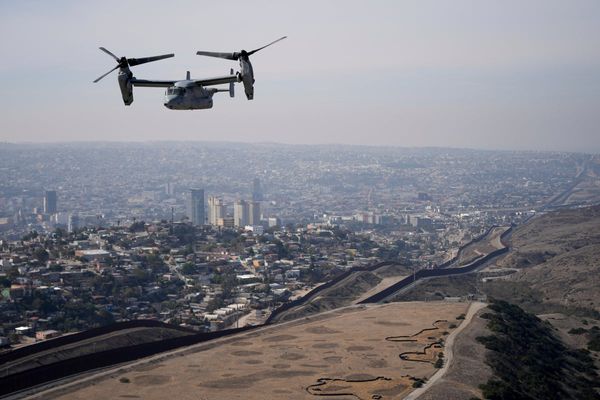
New South Wales’ two main renewable energy zones will be delayed for as long as two years and cost more to build with landholder opposition to new transmission lines partly to blame, the energy minister, Penny Sharpe, has said.
The Minns government briefed journalists about its network infrastructure strategy on Wednesday, revealing that the central-west Orana zone would not hit its “energisation date” until 2027-28, compared with an initial 2025 target. Similarly, the New England zone will now start in 2029 compared with an initial 2027 goal.
The two zones account for the bulk of the new generation capacity laid out in the renewable energy roadmap, drawn up by the previous Coalition government.
The central-west Orana area covers almost 21,000 square km, with the new network able to accommodate 4.5 gigawatts of capacity for new wind and solar farms at a cost of $3.2bn. The New England zone, covering almost 15,500 square km, will provide an initial network capacity of 2.4GW and cost $4.2bn.
Initial costings in 2020 had put the cost of $400m-$800m for the central-west Orana alone, Sharpe said, adding “there was not a lot of information” about the network details before she took over the portfolio.
“This is the detailed work for the first time that’s been done, rather than what I would call a bit of a ‘back of the envelope’ and a bit of guessing that went on in 2020,” she said.
The delays add to other hurdles in the race to build sufficient new generation capacity and storage in NSW and others states to replace coal-fired power stations as they close. This month Snowy Hydro admitted its giant pumped hydro plant would be delayed until as late as 2029 compared with a 2025 initial target.
Sharpe, though, said the snags would not put the state at risk of power outages.
“It’s very challenging as the incoming minister to be told that things are going to cost more and take longer,” she said. There’s “the need for us to look and squeeze the entire planning around this” and to ensure the plans won’t slip further.
“We are not going to allow the lights to go off,” Sharpe said, “We are not going to be turning off [coal-fired] generation that needs to be made if this other stuff’s not in place.”
Origin Energy’s plan to close its 2800-megawatt Eraring power station in August 2025 remains an issue for the government.
Sharpe said delays in the renewable zones were because the previous government’s timetables “didn’t include the need to work with communities, and to do that properly”.
Matt Kean, Sharpe’s predecessor and chief architect of the state’s renewables road map, said since the plan had been legislated in 2020, Covid triggered “huge labour shortages and massive supply chain cost escalations and capacity constraints in the broader market”.
“This has been seen around the world on major infrastructure projects,” Kean said.
The Coalition government had also increased the payments to landholders affected by new transmission lines, raising the fees from $5,000 a kilometre to $200,000, he said.
The costs of the new transmission will be picked up by the network operators who will pass them to consumers.







